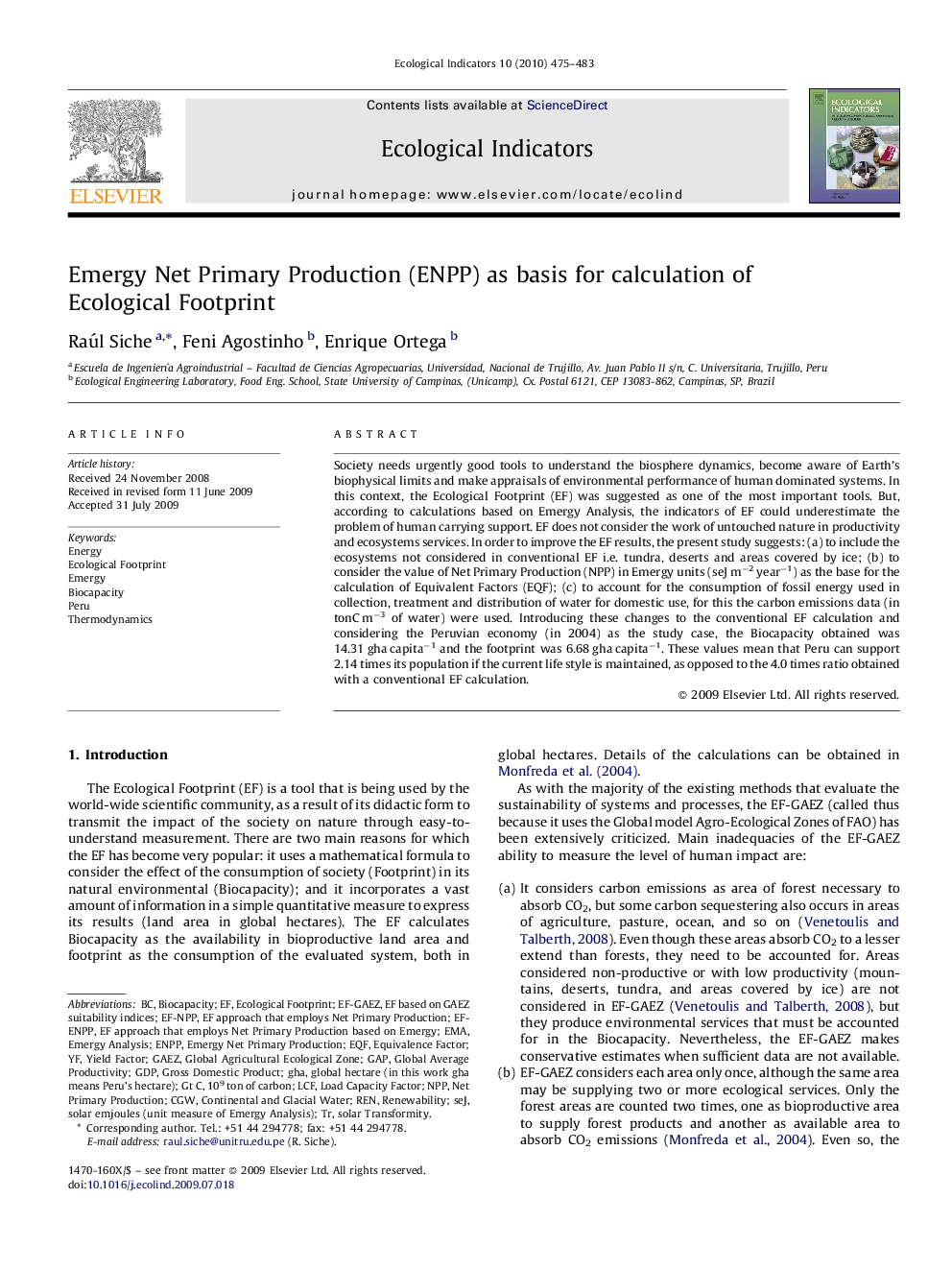| Article ID | Journal | Published Year | Pages | File Type |
|---|---|---|---|---|
| 4374303 | Ecological Indicators | 2010 | 9 Pages |
Society needs urgently good tools to understand the biosphere dynamics, become aware of Earth's biophysical limits and make appraisals of environmental performance of human dominated systems. In this context, the Ecological Footprint (EF) was suggested as one of the most important tools. But, according to calculations based on Emergy Analysis, the indicators of EF could underestimate the problem of human carrying support. EF does not consider the work of untouched nature in productivity and ecosystems services. In order to improve the EF results, the present study suggests: (a) to include the ecosystems not considered in conventional EF i.e. tundra, deserts and areas covered by ice; (b) to consider the value of Net Primary Production (NPP) in Emergy units (seJ m−2 year−1) as the base for the calculation of Equivalent Factors (EQF); (c) to account for the consumption of fossil energy used in collection, treatment and distribution of water for domestic use, for this the carbon emissions data (in tonC m−3 of water) were used. Introducing these changes to the conventional EF calculation and considering the Peruvian economy (in 2004) as the study case, the Biocapacity obtained was 14.31 gha capita−1 and the footprint was 6.68 gha capita−1. These values mean that Peru can support 2.14 times its population if the current life style is maintained, as opposed to the 4.0 times ratio obtained with a conventional EF calculation.
